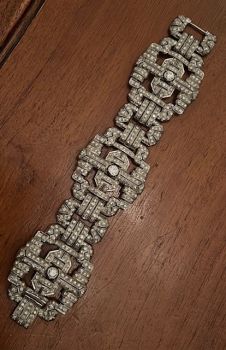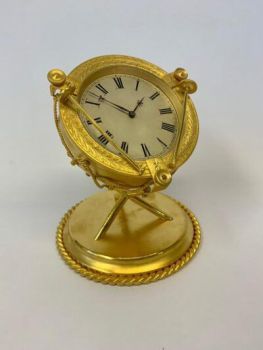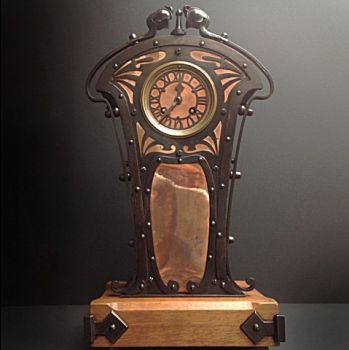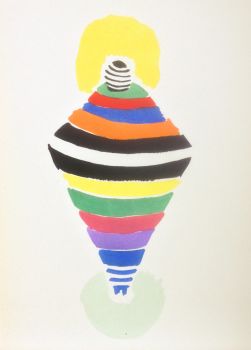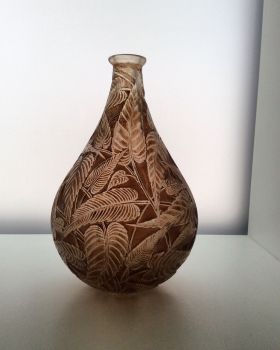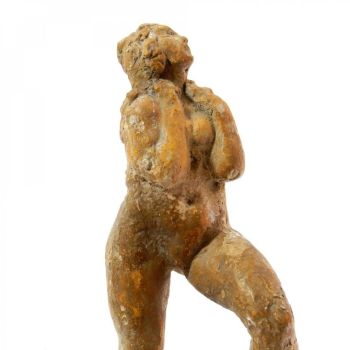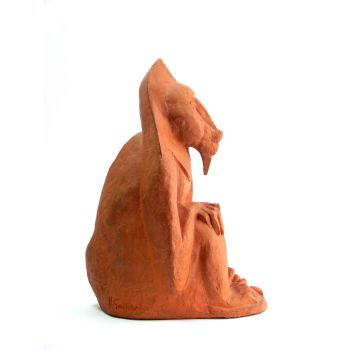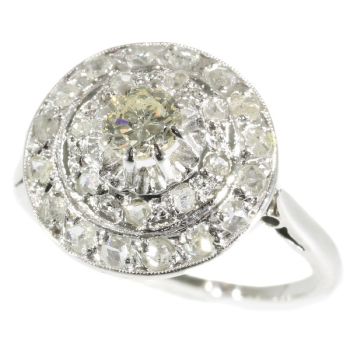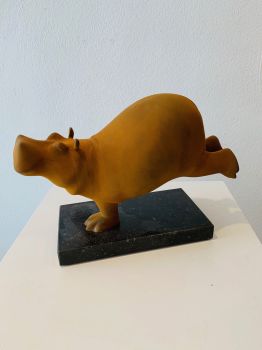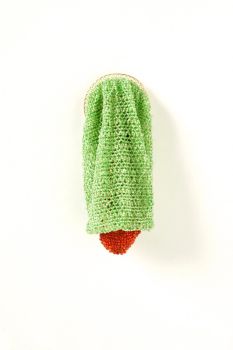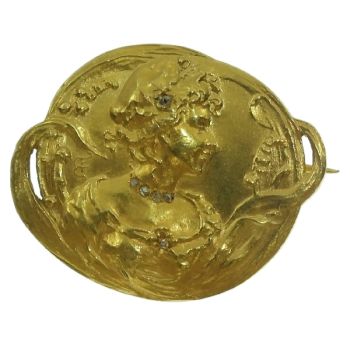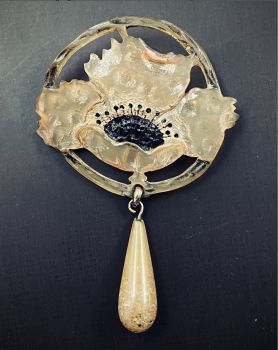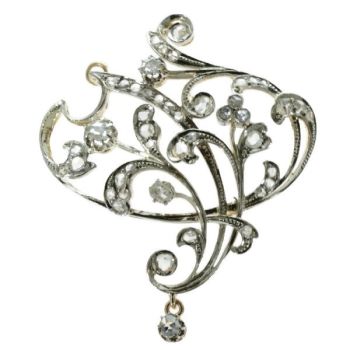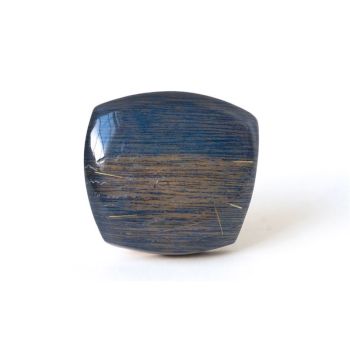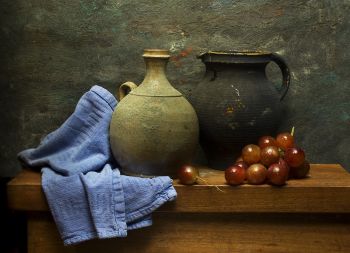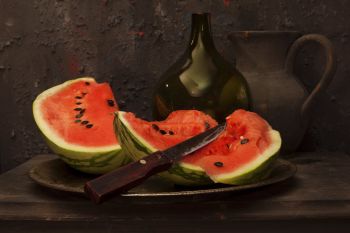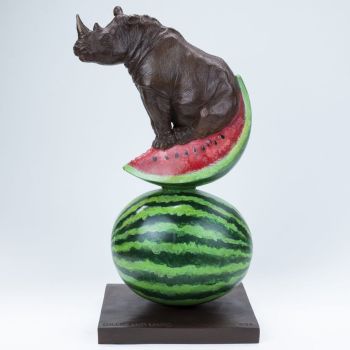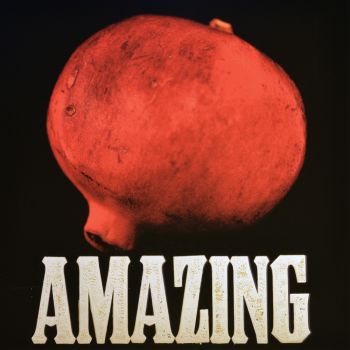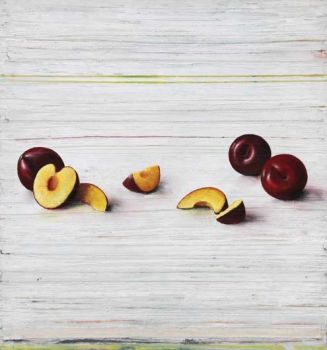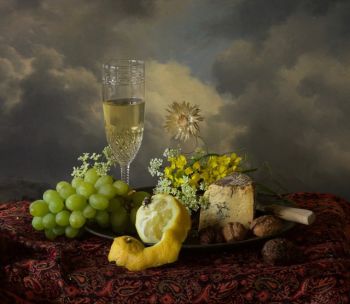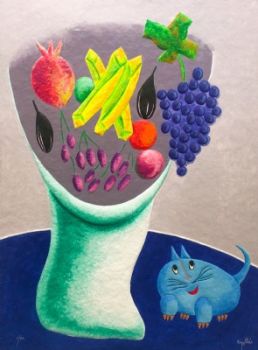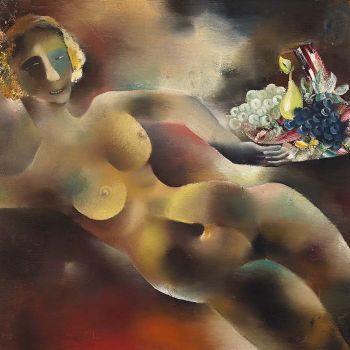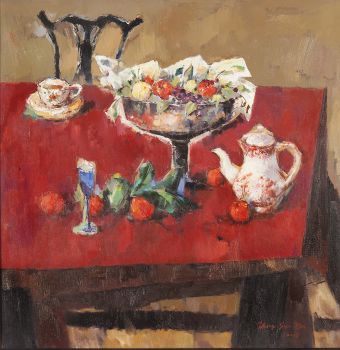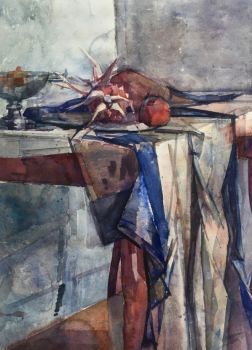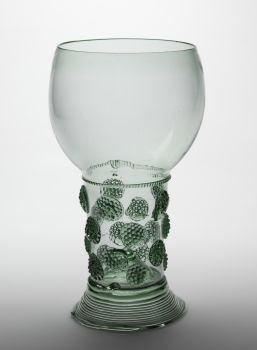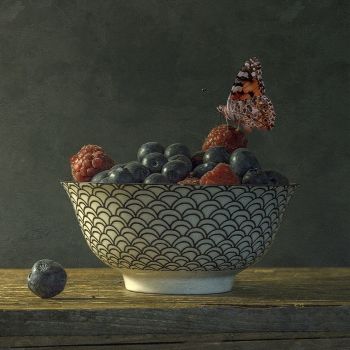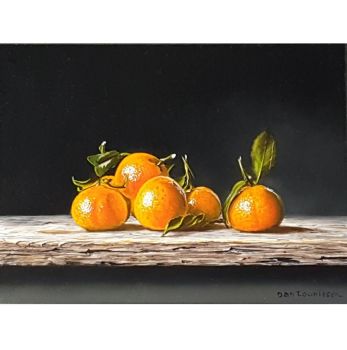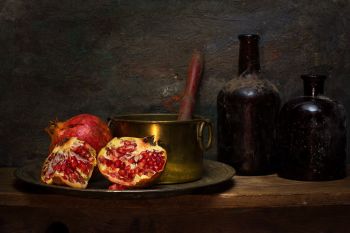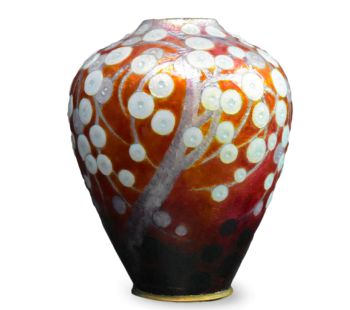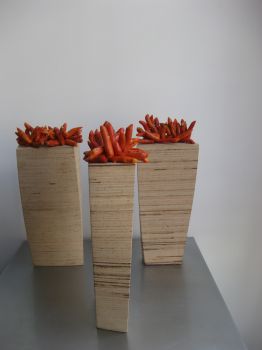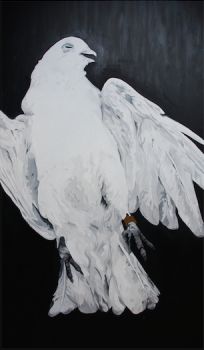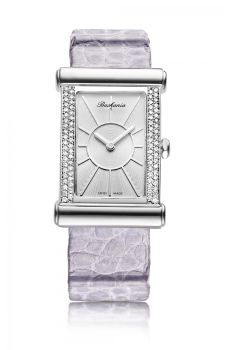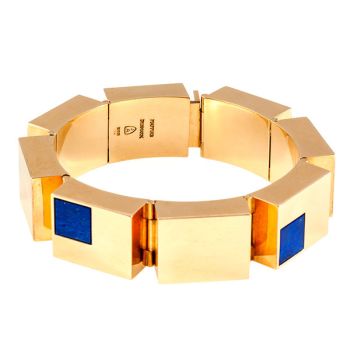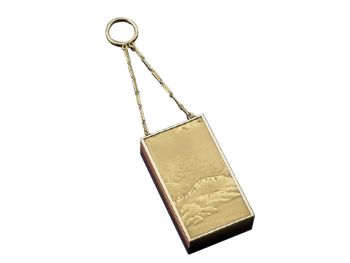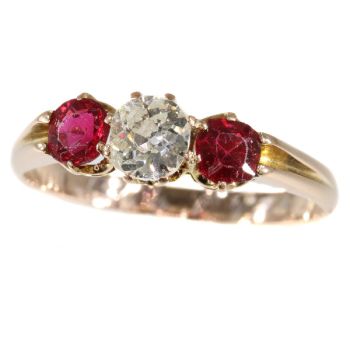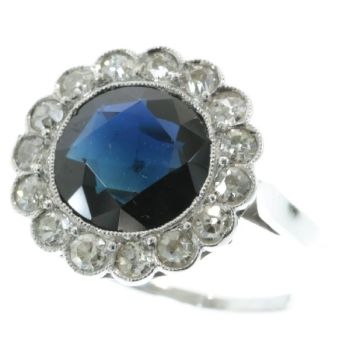Clipe Art Déco verdadeiramente magnífico, típico do Japonismo, coral e ônix recortado 1920
Artista Desconocido
CoralOrocoral rojo
€ 5.500
Adin Fine Antique Jewellery
- Sobre la obra de arte
This 18K yellow gold Art Deco brooch from 1920 seems to be an abstract tropical fruit engraved in coral freshly picked from the garden of Japonism. Still attached on four veins of carré cut onyx alternating with coral, this tempting jewel is preserved on an exquisite open work back with leafy patterns through which you could fancy yourself on your own desert island.
Antique jewelry object group: brooches
Country of origin: Although it does not carry any legible control marks we believe this to be of Belgian origin.
Style: Art Deco
(more info on styles)
Style specifics: Abstract motives and geometrical forms are quite typical for the Art Deco period.
Period: ca. 1920
(events and facts in 1920)
Source of inspiration: Japan
Material: 18K yellow gold
(more info on precious metals)
Extra information: Japonism, or Japonisme, the original French term, which is also used in English, is a term for the influence of the arts of Japan on those of theWest. The word was first used by Jules Claretie in his book L'Art Francais en 1872 published in that year. Works arising from the direct transfer of principles of Japanese art on Western, especially by French artists, are called japonesque.
Precious stones: coral onyx
(more info on precious stones)
Birthstones: Moonstone is the birthstone (or month stone) for July.
(more info on birthstones)
Hallmarks: No trace.
(more info on hallmarks)
Condition: excellent condition
(more info on our condition scale)
Dimensions: width 2.17 cm (0.85 inch), height 3.08 cm (1.21 inch)
Weight: 11.30 gram (7.27 dwt)
Reference Nº: 10015-4334
See also our:
all brooches, double clip, art deco jewelry, jewelry with coral, jewelry with onyx , latest acquisitions,
antique jewelry, estate jewelry, vintage jewelry or modern jewelry
Jewelry with birthstones (or month stones) for:
January - February - March - April - May - June - July
August - September - October - November or December.
Additional information:
jewelry glossary - wall of fame - visit us in Antwerp - subscribe to our mailinglist.
What is antique jewelry? - What is estate jewelry? - What is vintage jewelry? - Sobre el artista
Puede suceder que un artista o creador sea desconocido.
Algunas obras no deben determinarse por quién está hecho o por (un grupo de) artesanos. Algunos ejemplos son estatuas de la Antigüedad, muebles, espejos o firmas que no son claras o legibles, pero también algunas obras no están firmadas en absoluto.
También puedes encontrar la siguiente descripción:
•"Atribuido a …." En su opinión, probablemente una obra del artista, al menos en parte.
•“Estudio de….” o “Taller de” En su opinión, una obra ejecutada en el estudio o taller del artista, posiblemente bajo su supervisión
•“Círculo de…” En su opinión, una obra del período del artista que muestra su influencia, estrechamente asociado con el artista pero no necesariamente su alumno.
•"Estilo de …." o “Seguidor de…”. En su opinión, una obra ejecutada al estilo del artista pero no necesariamente por un alumno; puede ser contemporáneo o casi contemporáneo
•"Manera de …." En su opinión una obra al estilo del artista pero de fecha posterior
•"Después …." En su opinión, una copia (de cualquier fecha) de una obra del artista
•“Firmado…”, “Fechado…” o “Inscrito” En su opinión, la obra ha sido firmada/fechada/inscrita por el artista. La adición de un signo de interrogación indica un elemento de duda.
•“Con firma…”, “Con fecha…”, “Con inscripción…” o “Lleva firma/fecha/inscripción” en su opinión la firma/fecha/inscripción ha sido añadida por alguien que no es el artista
¿Está interesado en comprar esta obra de arte?
Artwork details
Related artworks
Artista Desconocido
Engels struttclock gesigneerd H.Rodrigues 42 Piccadilly 19th century
Precio a consultarNico van den Assem restauratie
1 - 4 / 12Artista Desconocido
Broche Art Déco temprano1920
Precio a consultarAns Hemke-Kuilboer Juwelier & Antiquair
Amalric Walter
Amalric Walter & Henri Bergé – Crabe plumier1920 - 1929
Precio a consultarAntiques Emporium
1 - 4 / 24- 1 - 4 / 24
Marie-Jeanne van Hövell tot Westerflier
Contemplation 012006 - 2017
Precio a consultarKoster Fine Art Gallery
1 - 4 / 24Fontana
Broche-colgante de canasta de flores1900 - 1905
Precio a consultarAns Hemke-Kuilboer Juwelier & Antiquair
1 - 4 / 24- 1 - 4 / 12









